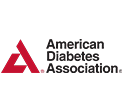Juvenile Arthritis Awareness Month Underscores Efforts to Identify Causes and Develop Treatments
That’s right. Children get arthritis too. In fact, according to the Arthritis National Research Foundation (ANRF), nearly 300,000 children in the U.S. have been diagnosed with juvenile arthritis (JA) – one of the most common childhood diseases in the country.
When Juvenile Rheumatoid Arthritis (JRA) first shows its symptoms in a child’s body, many parents write off swollen joints and fever as the flu, or think a sudden rash might have occurred from an allergic reaction. The symptoms might even recede slightly before showing up again, sometimes delaying diagnosis.
Because a child’s immune system is not fully formed until about age 18, JRA can be especially virulent, compromising the body’s ability to fight normal diseases and leaving children open to complications that can adversely affect their eyes, bone growth and more.
Both the Arthritis Foundation and the ANRF are on the forefront of combatting this disease by supporting research into causes and treatments.
The ANRF’s Kelly Award is one example of how the organization dedicates part of its research effort toward treatment of JRA. The $75,000 grant is given annually to a researcher focused solely on JRA treatment and cures. For the past two years, the award went to Dr. Altan Ercan at Brigham & Women’s Hospital in Boston, whose work has the potential to provide novel targets for new therapies.
Another example is the Arthritis Foundation’s partnership with the Childhood Arthritis and Rheumatology Research Alliance (CARRA). Through the partnership, the Foundation is working to create a network of pediatric rheumatologists and a registry of children with the disease, allowing researchers to identify and analyze differences and similarities between patients and their responses to treatment. Ultimately, the registry will help researchers cultivate personalized medicine, the ultimate weapon in battling the disease. The CARRA Registry has been launched at 60 clinical research sites and has enrolled 8,000 patients.
The Arthritis Foundation has also committed to providing more than $1.1 million in funding this year to researchers investigating a wide range of topics, including:
- Exploring how environmental and genomic factors might play a role in triggering juvenile arthritis;
- Collecting data and evaluating the efficacy of standardized treatment plans; and
- Developing and testing a smart phone app to help children cope with pain.
According to the Arthritis Foundation, there is no single test to diagnose JA. A diagnosis is based on a complete medical history and careful medical examination. Evaluation by a specialist and laboratory studies, including blood and urine tests, are often required. Imaging studies including X-rays or MRIs may also be needed to check for signs of joint or organ involvement.
“When joint pain, swelling or stiffness occurs in one or more of your child’s joints for at least six weeks, it’s important not to assume these symptoms are temporary, and to get a proper diagnosis from a pediatric arthritis specialist,” says Arthritis Foundation Vice President of Public Health Policy and Advocacy, Dr. Patience White. “Early medical treatment of juvenile arthritis can prevent serious, permanent damage to your child’s joints and enable her to live an active, full childhood.”
Management of JA depends on the specific form of the disease but can include:
- Care by a pediatric rheumatologist.
- Nonsteroidal anti-inflammatory drugs (NSAIDs) to control pain and swelling.
- Corticosteroids such as prednisone to relieve inflammation, taken either orally or injected into inflamed joints.
- Biologic Response Modifiers (BRMs), such as anti-TNF drugs to inhibit proteins called cytokines, which promote an inflammatory response. These are injected under the skin or given as an infusion into the vein.
- Disease-modifying anti-rheumatic drugs such as methotrexate, often used in conjunction with NSAIDs to treat joint inflammation and reduce the risk of bone and cartilage damage.
One promising therapy in the fight against juvenile arthritis has been recently approved by the Food and Drug Administration – Actemra (tocilizumab) – from Roche. Used to treat polyarticular juvenile idiopathic arthritis (PJIA), the medicine can be used in children ages 2 and older. It is also approved for the treatment of active systemic juvenile idiopathic arthritis (SJIA).
How can organizations like the Arthritis Foundation and the ANRF increase awareness that arthritis happens to children, and build support to advance development of research and therapies?



















